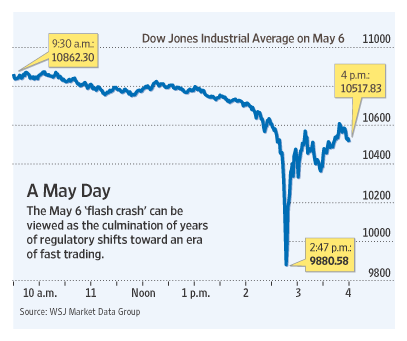The Securities and Exchange Board of India (SEBI) has set a cat among the HFT (High Frequency Trading) pigeons by proposing seven measures to curb the impact of HFT and improve “real liquidity” in the stock markets.
The big problem with HFT is that algorithms tend to cancel lots of orders – there might be a signal to place an order, and even before the market has digested that order, the order might get cancelled. This results in an illusion of liquidity, while the constant placing and removal of liquidity fucks with the minds of the other algorithms and market participants.
There has been a fair amount of research worldwide, and SEBI seems to have drawn from all of them to propose as many as seven measures – a minimum resting time between HFT orders, matching orders through frequent batch auctions rather than through the order book, introducing random delays (IEX style) for orders, randomising the order queue periodically, capping order-to-trade ratio, creating separate queues for orders from co-located servers (used by HFT algorithms) and review provision of the tick-by-tick data feed.
While the proposal seems sound and well researched (in fact, too well researched, picking up just about any proposal to regulate stock markets), the problem is that there are so many proposals, which are all pairwise mutually incompatible.
As the inimitable Matt Levine commented,
If you run batch auctions and introduce random delays and reshuffle the queue constantly, you are basically replacing your matching engine with a randomizer. You might as well just hold a lottery for who gets which stocks, instead of a market.
My opinion this is that SEBI shouldn’t mandate how each exchange should match its orders. Instead, SEBI should simply enable individual exchanges to regulate the markets in a way they see fit. So in my opinion, it is possible that all the above proposals go through (though I’m personally uncomfortable with some of them such as queue randomisation), but rather than mandating exchanges pick all of them, SEBI simply allows them to use zero or more of them.
This way, different stock exchanges in India can pick and choose their favoured form of regulation, and the market (and market participants) can decide which form of regulation they prefer. So you might have the Bombay Stock Exchange (BSE) going with order randomisation, while the National Stock Exchange (NSE) might use batch auctions. And individual participants might migrate to the platform of their choice.
The problem with this, of course, is that there are only two stock exchanges of note in India, and it is unclear if the depth in the Indian equities market will permit too many more. This might lead to limited competition between bad methods (the worst case scenario), leading to horrible market inefficiencies and the scaremongers’ pet threat of trading shifting to exchanges in Singapore or Dubai actually coming true!
The other problem with different exchanges having different mechanisms is that large institutions and banks might find it difficult to build systems that can trade accurately on all exchanges, and arbitrage opportunities across exchanges might exist for longer than they do now, leading to market inefficiency.
Then again, it’s interesting to see how a “let exchanges do what they want” approach might work. In the United States, there is a new exchange called the Intercontinental Exchange (IEX) that places “speed bumps” over incoming orders, thus reducing the advantage of HFTs. IEX started only recently, after major objections from incumbents who alleged they were making markets less fair.
With IEX having started, however, other exchanges are responding in their own ways to make the markets “fairer” to investors. NASDAQ, which had vehemently opposed IEX’s application, has now filed a proposal to reward orders by investors who wait for at least once second before cancelling them.
Surely, large institutions won’t like it if this proposal goes through, but this gives you a flavour of what competition can do! We’ll have to wait and see what SEBI does now.
 \
\